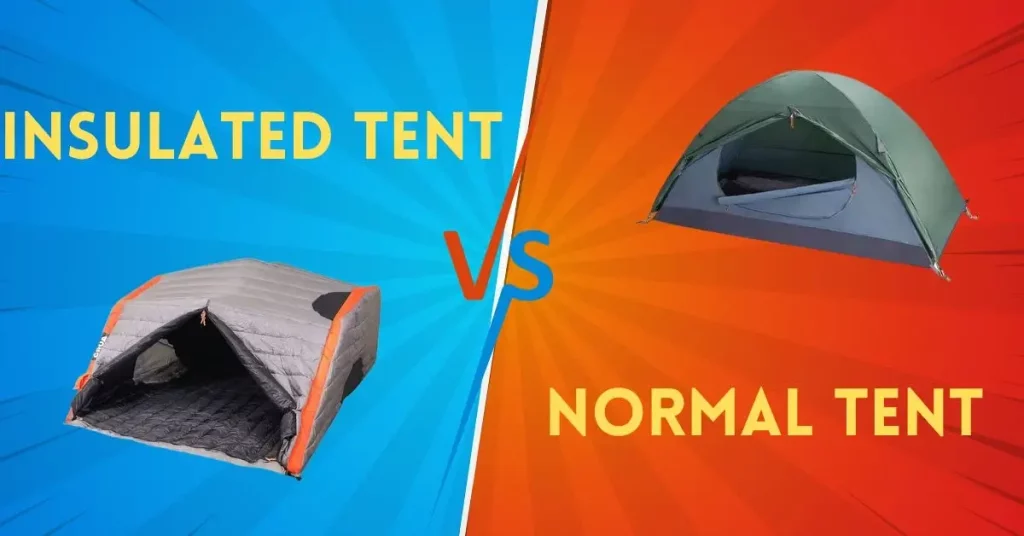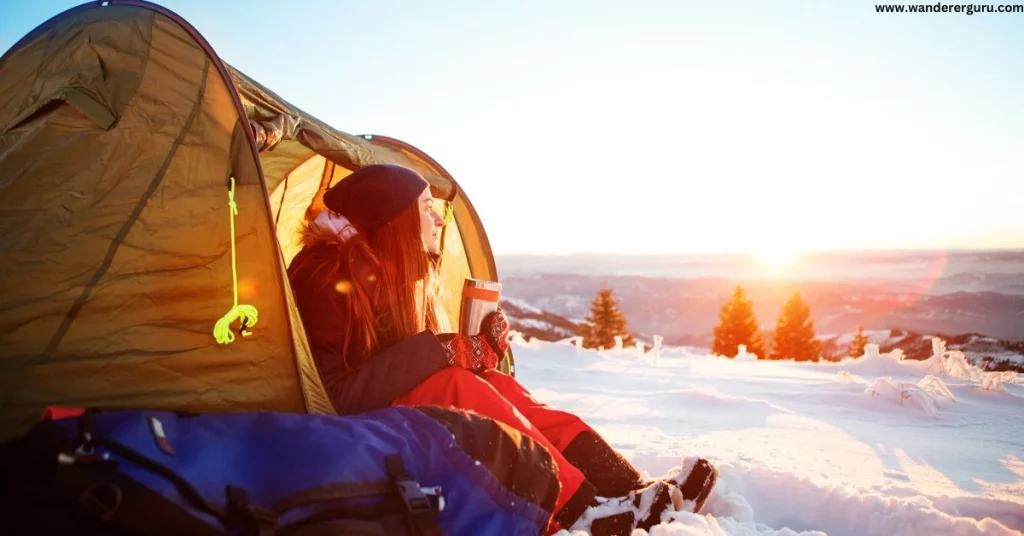Are you planning your next camping trip in winter and wants to know how to insulate a tent for winter camping? Then you are at the right place! When the temperatures drop, and winter’s icy grip takes hold, many adventurers might choose to stay indoors. However, for those who love the thrill of outdoor experiences, winter camping can be an exciting and memorable adventure.
To ensure a comfortable and cozy experience, knowing how to insulate your tent properly is crucial. In this comprehensive guide, we’ll walk you through the steps to effectively insulate your tent for winter camping, so you can stay warm and enjoy the beauty of the snow-covered landscapes.
Bonus:
HOW TO STAY WARM IN A TENT WITHOUT ELECTRICITY?
How to Insulate a Tent for Winter Camping?
Insulating a tent for winter camping is necessary to stay safe and warm. You need it so the weather can’t bother you while camping. The precautions can safe your trip from ruining and gives you better experience! You can use the following tips in order to insulate a tent for winter camping with ease and properly:
Choose the Right Tent:
Selecting the right tent is the first step in preparing for winter camping. Opt for a four-season or cold-weather tent designed to withstand the harsh conditions of winter. These tents are built with sturdy materials, reinforced poles, and a design that can handle heavy snow loads and strong winds.
Clear and Level Ground:
Before setting up your tent, ensure the ground is clear of snow, rocks, and debris. A level surface will provide better comfort and prevent cold air from seeping in. Use a snow shovel to create a flat area and clear the snow away.
Use a Footprint:
A footprint is a protective layer placed beneath the tent to shield it from moisture and cold coming up from the ground. This helps to create an extra barrier against cold and dampness. Ensure the footprint is slightly smaller than the tent’s floor to prevent water pooling between the tent and the impression.
Insulate the Floor:
To prevent cold air from rising into your tent, insulate the floor. Lay down foam sleeping pads or insulated blankets to add protection between you and the hard ground. This will help retain body heat and keep you warm throughout the night.
Seal Tent Seams:
Check your tent’s seams for any gaps or openings that could allow cold air to enter. Seam sealer is an easy-to-use product that can be applied to seal up these gaps and enhance the overall insulation of the tent.
Block Drafts:
Cold drafts can quickly make your tent feel chilly. Use weather-stripping tape or draft stoppers to seal off any gaps around zippers, windows, and vents. This will prevent cold air from infiltrating your tent’s interior.
Layer Up on Bedding:
Choosing the right sleeping bag is crucial for staying warm during winter camping. Opt for a bag rated for colder temperatures than anticipated to ensure you’re adequately insulated. Additionally, consider using a liner inside your sleeping bag for extra warmth. Layering blankets or sleeping bags can also help trap heat effectively.
Insulate the Tent Walls:
Hang insulating blankets or quilts along the walls of your tent. This creates an extra insulation layer and prevents the cold tent walls from radiating cold air. Attach these blankets using clips or hooks to keep them in place.
Proper Clothing and Layering:
Even within a well-insulated tent, it’s essential to wear proper clothing to keep warm. Dress in moisture-wicking base layers, followed by insulating layers, and top it off with a waterproof and windproof outer layer. Remember warm socks, gloves, and a hat to retain body heat.
Cook Inside the Tent:
Cooking inside the tent can help raise the interior temperature, providing a temporary heat source. However, be cautious and ensure proper ventilation to avoid carbon monoxide buildup. Only use open flames or portable stoves with appropriate safety precautions.
insulated tent vs normal tent

The main difference between the insulated tent and the nomral tent is that the Insulated tent keeps you warmer in winter compared to the Normal tent.
Insulated Tent: An insulated tent excels in extreme conditions by regulating temperatures effectively, ensuring comfort in harsh weather. However, its added insulation makes it heavier and pricier. Ideal for winter and demanding proper ventilation to prevent moisture buildup.
Normal Tent: A regular tent prioritizes portability, versatility, and affordability. While suitable for moderate weather and various camping scenarios, it sacrifices some temperature control. It’s easy to set up and adaptable. If you wanna learn about the comparsion between review this article.
What is the best weather to insulate a camping tent?
Insulating a camping tent is most advantageous during colder weather conditions. The insulation’s effectiveness in retaining warmth is particularly pronounced when temperatures are lower. By employing insulation, you can significantly reduce heat dissipation, creating a cozier interior environment. However, it’s essential to strike a balance by ensuring adequate ventilation to thwart condensation buildup, which can otherwise offset the insulation’s benefits. Therefore, when aiming to optimize comfort and protection in your camping experience, colder weather scenarios serve as the prime context for tent insulation.
Is it safe to insulate a tent in winter?
Insulating a tent in winter can enhance safety and comfort. Proper insulation retains heat and shields against the cold, reducing the risk of hypothermia and frostbite. However, ensure adequate ventilation to prevent condensation. Beware of using flammable materials and maintain a fire-safe environment. Plan insulation carefully; improper installation might lead to moisture accumulation or inadequate air circulation. In conclusion, with mindful planning, tent insulation can be safe and advantageous for winter camping, fostering a more secure and enjoyable experience. For more ideas visit my Pinterest.
Conclusion
Winter camping offers a unique opportunity to connect with nature in its serene and quiet state. By properly insulating your tent, you can stay comfortable and warm, making your winter camping experience memorable. Invest in a suitable tent, protect the floor, seal gaps, and choose appropriate bedding and clothing. With these steps, you’ll be well-prepared to face the cold and create lasting memories in the winter wonderland. Stay cozy, stay safe, and enjoy the beauty of the great outdoors during the colder months.
FAQs
Q1. Why is avoiding rainy weather important during tent insulation?
A: Rain can hinder proper material bonding and compromise the effectiveness of insulation. Dry conditions are essential to achieve a successful and long-lasting insulation outcome.
Q2. Can I insulate my tent during windy days?
A: It’s advisable to avoid insulating during windy weather. Windy conditions can make the insulation process challenging and impact the quality of insulation, potentially leading to cold spots within the tent.
Q3. How does choosing the right weather affect my camping experience?
A: Selecting suitable weather for tent insulation ensures that the materials bond effectively, leading to improved insulation and a cozy camping experience. It helps maintain warmth and comfort inside the tent, even in changing outdoor conditions.
Q4. Is there a temperature range to consider for tent insulation?
A: Yes, the ideal temperature range for insulating a camping tent is between 50 to 70°F (10 to 21°C). This range offers optimal conditions for materials to adhere effectively and ensures a successful insulation process, contributing to a warm and comfortable camping experience
Bonus:

